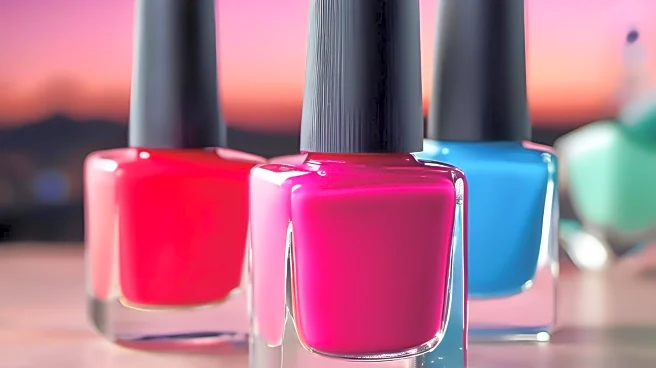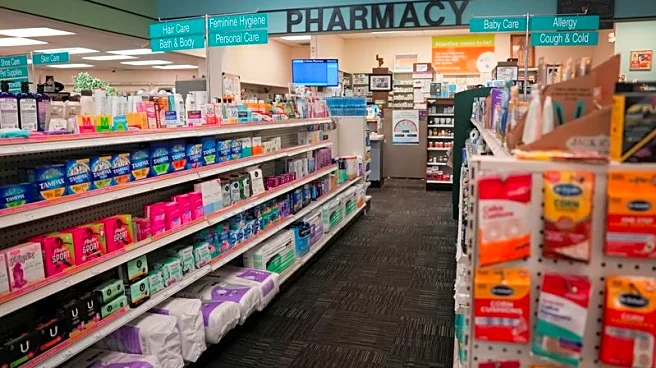What's Happening?
The European Union has implemented a ban on the ingredient trimethylbenzoyl diphenylphosphine oxide (TPO) found in many gel nail polishes. This decision is based on studies suggesting that TPO may be carcinogenic,
mutagenic, or toxic for reproduction. The ingredient is used to create a durable, chip-free coating in nail polishes. Concerns have been raised following a 2020 study on rats, which indicated significant reproductive harm, including testicular changes and reduced fertility. Additionally, the UV-emitting lamps used in gel manicures have been linked to potential skin cancer risks, as they may cause cell damage. This has prompted further scrutiny of gel manicure practices.
Why It's Important?
The ban on TPO by the European Union highlights growing concerns about the safety of cosmetic products and their potential health impacts. This move could influence regulatory actions in other regions, including the United States, where similar health concerns have been raised. The beauty industry may face increased pressure to reformulate products and adopt safer alternatives. Consumers who frequently use gel manicures might reconsider their choices due to potential health risks. The decision also underscores the importance of ongoing research and regulation in ensuring consumer safety in the cosmetics industry.
What's Next?
As the European Union's ban takes effect, it is likely that manufacturers will need to reformulate their products to comply with new safety standards. This could lead to increased research and development costs for companies. In the U.S., regulatory bodies like the FDA may face calls to review and potentially regulate similar ingredients. Salons might also shift towards using LED lamps instead of UV-emitting ones, although the safety of LED alternatives remains under discussion. Consumers may seek out TPO-free products or alternative manicure options that do not require UV curing.
Beyond the Headlines
The ban raises broader questions about the regulation of cosmetic ingredients and the balance between product performance and safety. It highlights the ethical responsibility of manufacturers to ensure their products do not pose health risks. The situation also reflects a growing consumer demand for transparency and safety in beauty products. Long-term, this could lead to a shift in industry standards and consumer preferences towards safer, more natural ingredients.













